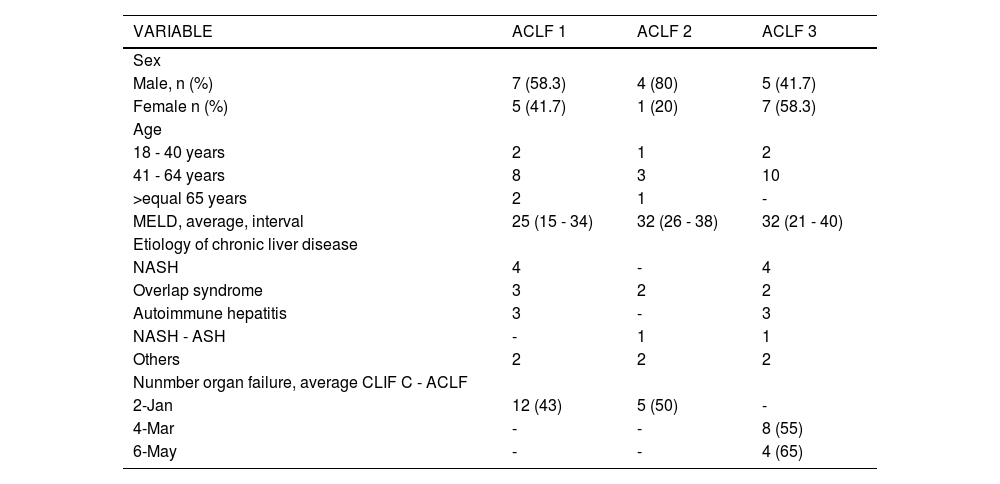
Abstracts of the 2022 Annual Meeting of the ALEH
More infoAcute on chronic liver failure is characterized by acute decompensation of chronic liver disease, associated with different organ failure and, therefore, with high mortality. Management is based on supportive treatment and liver transplantation. Successful liver transplantation in Peru began on March 24, 2000. The ACLF consensus dates back to 2009; the first patient with ACLF transplanted in Peru was performed in January 2015; she was a 61 years old woman with cryptogenic liver cirrhosis with three organ failures, ACLF - 3, with CLIF - C ACLF score of 55 points. This study aimed to stratify the different organ failures involved in acute on chronic liver failure in patients undergoing liver transplantation as treatment.
Materials and MethodsRetrospective, a descriptive study from January 2015 to April 2022, included 72 adult liver transplant patients at the "Guillermo Almenara" Hospital. Patients with Hepatopulmonary Syndrome, Liver retransplant, Combined liver-kidney transplant, Hepatorenal polycystosis, SPLIT and Domino Technique, and Pediatric patients were excluded.
ResultsOf the 72 liver transplant patients, 40.3% (29 patients) had ACLF, 12 (41.4%) type 1 patients, 5 (17.2%) type 2 patients, and 12 (41.4%) type 3 patients. Average CLIF C - ACLF 50 points. The most frequent organ failure after hepatic was cerebral with encephalopathy 2 in 12 (41.4%) patients; the next failure was coagulation with INR 2 - <2.5 in 9 (31%) patients.
ConclusionsLiver transplantation represents the optimal and definitive treatment. In our casuistry, 40.3% of cirrhotic patients with ACLF were transplanted, with improvement in organ failure and survival at 28 and 90 days of 100%. The average CLIF C - ACLF score of these patients was 50.4 points, with a maximum of 70 points.









